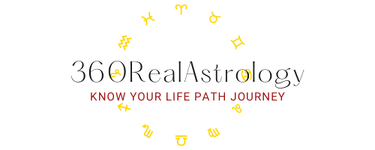The 12 Universal Laws: Explained and Simplified for Beginners

1. Introduction
An explanation of the concept of “vibration” and how everything is energy and therefore, everything has a vibrational force. The higher the energy contained within an object, the higher its vibrational force, and the opposite is also true. Thoughts, feelings, and emotions are also included in this definition, and facing high and low points in life are a result of the Law of Vibration. Subsequent chapters will include more information regarding the vibration of the laws and their correspondences.
General overview of the Universal Laws and how they were channeled. These laws are the unchanging, unyielding principles that govern the universe and our lives within it. The divine gave these laws to humanity in order to help them realize and reach their potential. They are called the Universal Laws because they are applicable everywhere and at any time. They are the same in ancient times as they are today and they will remain constant in the future. These laws supersede all human laws. They are laws of higher vibrational forces and these forces, when applied, can help people “achieve their full potential.”
2. Understanding the Universal Laws
2.2. Law of Cause and Effect Greene begins with a picture of the Greek God ‘Atreus’ who took revenge on his brother by preparing two meals – one with the flesh of his brother’s children and one with sheep. After gaining satisfaction from the act, the God announced what he had done and the kids’ flesh was revealed. Because he took satisfaction from one act, the effect snowballed to disaster. This story shows the law of cause and effect in its simplicity. What is interesting here is that Greene says there is no reversal of this law and that the understanding of this law only has one level – it is either understood or it is not. He then explains the difference between someone who is conscious of the time delay for this law and someone who is not. The strategies are too long to explain in depth here, and so I will not do them injustice because they are also linked to law 11. Transgression of the law gives a warning to be wary of the short-term benefits of quick fixes.
2.1. Law of Attraction Greene opens by saying that the law of attraction is the most powerful of the 12 laws – this could be because it is linked to another law called the law of love. Although it may seem quite ‘new age’ to some readers at first, Greene gives this law a very scientific foundation. He explains that everything in the universe is made up of energy, including our thoughts. Positive energies produce positive results and negative energies produce negative results. He gives the reversal by saying a person’s thoughts are influenced by the results they get – but because we first have to think before we act, this is deemed to be untrue to the reader who can understand the law.
To show the difference between a person who is unconscious and conscious of this law, Greene gives a funny example of a pickpocketing raccoon. He then uses a personal example where he made a choice to change his way of thinking. This resulted in an 8-hour wait in order to skip a £150 queue because he was influenced by £2 attraction. At first, he did not understand the cause of such events but through hindsight, it became apparent that he had made a change in thought. The strategies include controlling emotions, being yourself, following your gut instincts, and not overcomplicating things.
This section delves right into the heart of the title and proceeds in the logical sequence of first explaining what each law is, then breaking it down into a practical model. For each law, Greene gives a ‘reversal’ to help the reader understand the law from both perspectives. He then shows the difference between someone who is ‘unconscious’ of the law and someone who understands the law, goes on to describe the ‘time delay’ in which the law takes to have effect, and finally gives strategies on how to use this law to our advantage. Throughout each law, there are case examples or historical events given to help us understand the application of the law. At the end of each law, there is a snippet titled ‘transgression of the law’ which shows the negative effects if we were to break the law.
2.1. Law of Attraction
“As defined by Abraham-Hicks, ‘That which is like unto itself, is drawn.’ When you understand the Law of Attraction, you are never surprised by what is happening in your experience, for you understand that you have brought it upon yourself with your thoughts and feelings—no exceptions. We are not just talking about the thoughts that you consciously think, although they are certainly included. It is more about how you are feeling in any point in time. After learning the FFF awareness exercise, which plays throughout the track of your day if you are vigilant, you will become aware of the feelings you’ve been feeling leading up to any experience.
This may be very telling if an experience that you do not want in your life happens, because you will discover it has been the result of chronic thought patterns at a certain vibration, not just a passing bad mood. A mood is a rather broad, general and fleeting set of thoughts that could be caused by any number of vibrationally charged thoughts. Remember, thoughts are simply energy in the form of vibration. Any thought that causes you to feel a ‘negative’ emotion is a discordant vibration and any thought that causes you to feel a ‘positive’ emotion is a concordant vibration. The Law of Attraction is a dire and simple Law. Whatever you are giving your energy, focus and attention to, whether thought or feeling, you will attract that of its likeness.”
2.2. Law of Cause and Effect
When you’re looking to uncover the universal truths which govern the world around you, like the Law of Cause and Effect, it’s good to remember that the individual laws are inherently connected and all have roots in one another. The Law of Cause and Effect states that for every cause, there is an effect, and for every effect, there is a cause. This is often distilled into the saying “You reap what you sow”. The concept is a bit difficult to fathom at first, since in the day-to-day grind which often comprises one’s life, it appears as events happen randomly, with little or no persuasive force behind it.
Sometimes it feels like we’re at the whim of Lady Luck, where sometimes we’re fortunate, and sometimes we’re just out of plain luck. But if you really pause and take a moment to deeply scrutinize the occurrences in your life, you may find that there is much more order than you previously suspected. You can try this by looking at something as simple as the grades you’ve obtained in a particular subject; the amount of effort you put into your studies would be the “cause”, and the grade you receive would be the “effect”.
This can be applied to a vast array of circumstances in your life where you may begin identifying its authenticity. Being able to distinguish the sequence of “cause and effect” for events happening in your life may be to your benefit, since you can then learn how to shape your future for better results and avoid the repeated mistakes of the past.
2.3. Law of Vibration
The Law of Vibration states that everything vibrates, nothing sits still. This may be hard to comprehend for some, but a look at science shows us that everything is in a constant state of motion and therefore always vibrating. The chair you may be sitting on, the food you ate for lunch, or even your pet dog is vibrating. Everything has its own vibrational frequency. If it is stagnant or negative, it is vibrating at a lower frequency. Things that have higher energy and positivity are vibrating at a higher frequency. This has a large effect on the things we are able to attract into our lives. If we emit a low frequency, we will attract similar situations and people to us.
If we emit a higher frequency, we will be able to attract more positive and beneficial situations into our lives. This could be taken in terms of meeting a new person just when you were trying to, or finding a solution to a problem in an unexpected manner. Learning to consciously raise your frequency is pivotal, and the easiest way to do this is through focusing on positive thoughts and emotions. Although it may be difficult for some to grasp the concept of everything vibrating, some thought will show anyone that different things in our life are affected by our level of energy. Upon further self-reflection on times of negativity and positivity, the differences in the situations that have occurred in those times will become evident.
Understanding the universal laws: Law of Vibration
3. Applying the Universal Laws in Daily Life
They say that knowing is only part of the battle and that the universe rewards those who take action. The most important step of incorporating the Universal Laws into your life is becoming consciously aware of the Law and then making a commitment to aligning your actions with the Law. Understanding that the Universal Laws are constantly at work in your life will help to build a strong conviction to following the path of the Law, and you will begin to notice how unfailing the Laws are. One way to do this is sharing what you have learned with others.
Teaching the Law to others and helping them to see the correlation between the Law and their life will reinforce your own understanding of the Law. Another way to become more consciously aware is by reminding yourself of the presence of the Law and its influence in your life, every day. This can be done through contemplation, or the use of positive affirmations. A firm belief that the Laws work will dispel doubt and fear. Remember that any resistance to the Law will invoke an equal response.
3.1. Setting Clear Intentions
Remember that the universe can and will deliver all things, so be conscious about wanting things that are positive and constructive. With any of these limiting patterns, intending to change can be useful in and of itself. Setting clear intentions is a skill that must be practiced. The following are steps for becoming a powerful intender.
Setting clear intentions is a simple process but may not be easy. The reason is that it is often hard to get to the place where you truly know what you want. Usually, it takes being clear about what you do not want to know what you do want. And even when you do know what you want, you may be conflicted, constantly changing your mind, or may work against yourself by wanting things that are in direct opposition to each other.
In order to properly manifest something into your life – using the Law of Attraction or any of the other universal laws – clear intentions are paramount. Clear intention hinges on the will to change your point of attraction and change your vibration to one that is in alignment with the universe, so that you attract what you want into your life and not what you do not want.
3.2. Practicing Gratitude
Webster’s dictionary defines gratitude as “a feeling of thankfulness or appreciation, as for gifts or favors”. A gift is anything that is given, and it is proven that there are always things to be thankful for. In daily life, there are so many things that we can be thankful for: having water to drink, a roof over our heads, or people who love us for good, bad, or anything that one is doing. Too often, we take this for granted and do not realize that there are people out there in the world who have less than us. Being thankful for the things that we have is a good way to bring positive energy into our lives. However, do not feel bad if you feel that you do not have enough. Having the desire to have a better quality of life is a good thing and is perfectly achievable.
Gratitude, the second step in the Universal Law, the Law of Attraction, is an important one. This is a very easy concept, but some of us have difficulty in putting it into practice. Gratitude, in its simplest form, is being thankful. It is a positive energy which is light and will therefore attract more positive energy. Although it sounds simple, many of us are filled with negative energy. It is a concept of the Law of Attraction that the more thankful you are, the more things you will have to be thankful for.
3.3. Taking Inspired Action
The third universal law states that everything is energy and all energy attracts like energy. In order to manifest anything, we must match our energy with what we want to manifest. Taking inspired action is the process of aligning our energy with that of what we want to manifest. Inspired action is an action that you want to do, that has no feel of obligation or sense of needing to do it. Inspired action is often described as “gut feeling”. When we are taking inspired action, it feels effortless and fun. We are pulled towards our action and it just seems to fall into place. With inspired action, there is no resistance.
Action that is not inspired can often feel like you are pushing a boulder up a hill. This type of action will result in poor productivity and little or no results. Action that is inspired will lead to results, usually very good ones. How we are inspired to take inspired action varies for all of us. The way to figure out the process to be most inspired is to learn to listen to your intuition. Intuition is the ability to understand something immediately, without the need for conscious reasoning. Each and every one of us has had feelings of intuition, which often turn out to be correct decisions. Following intuition can bring much success to someone, intuition leads to inspired action and inspired action leads to great results. Learning to become more intuitive is a great way to begin taking more inspired action.
3.4. Cultivating a Positive Mindset
Realize that hard work cannot deliver good results if accompanied by a negative state of mind generally caused by impatience, intolerance, and uncontrolled desires. Ask yourself how hard you are working, what results it is giving, and how do you feel? If you feel tired and restless with unsatisfactory results, then it is most likely physical hard work and effort, but if you’re working with enough time for relaxation, full of energy and excited about the results, then it’s more likely to be the result of balanced mental and physical work with a positive state of mind.
A positive state of mind isn’t just optimism, but thinking in the right way, and it’s important to be aware of the influences affecting mental state. Positive mental states and thinking deliver positive and vibrant energy visible through body language, facial expressions, actions, and speech and draw people and conducive environments. This further results in continual positive life experiences.
A positive mindset is crucial for success in life. The emotional and physical state you are in when working determines the results of the task. A positive mindset results in a good or favorable outcome. A successful life doesn’t come from hard work alone. A good result is a combination of both hard work and a positive state of mind. Hard work is actually a by-product of positive thinking and a by-product of ‘belief’, ‘focus’, and ’emotional control’.
4. Manifesting Success with the Universal Laws
When actions are taken because you are trying to force something to happen, this is when you can make mistakes or fail to achieve your desires. These mistakes are due to taking the wrong action because you are not listening to your intuition. If you can cultivate the ability to listen to your inner guidance and act on that which inspires you, you will be taking successful action to achieve your goals.
One of the biggest secrets to success with the Law of Attraction is to take focused action. Once you have identified your desires and defined your goals, you must take effective action that will move you in the direction of success. For an act to be considered effective, it must be inspired. This means you are doing something because you are being pulled by a desire instead of being pushed by a feeling of desperation or needing to do it.
The manifestation process is a very powerful one, and success can be achieved much more easily once you understand the process and how it works! This section will guide you through the steps involved in using the law of attraction to manifest your desires, teaching you how to make the most out of the universal laws to bring about the life you truly desire.
4.1. Aligning with Abundance
Abundance is another buzzword we often hear. What exactly is abundance? Abundance is a flow of energy and information. It is a whole lot of something. Abundance can come to us in a variety of ways. It could be love, money, health, happiness, and so on. Simply put, it is having a large amount of something. We are to align with abundance, and we do this by being in vibrational harmony with that which we want. For the most part, the things we want are material objects, money, success, love, etc. This does not mean you are a materialistic person.
It just means you know what you want out of life and are striving to get it. In order to get the things we want, we need to align our thoughts, feelings, emotions, attitudes, and beliefs with what we want. This sounds simple but can be quite difficult to do. This requires a lot of self-awareness and taking responsibility for our own creations. An abundant lifestyle is our birthright, and we should not feel guilty for wanting to live it.
4.2. Overcoming Limiting Beliefs
Limiting beliefs are typically formed in childhood. They are usually generalizations made about events that we observed to be painful or traumatic. A belief is a generalization about a past experience and it’s a way that we make sense of the world, it’s not the truth. Because a belief is a generalization, there are always exceptions to the rule. This is an important notion to understand, as it provides a loophole for you to change your limiting beliefs. By identifying the exceptions to the belief, you are able to weaken it. For example, the belief “people are never there when I need them” can be disproved by thinking of people that have been there for you in the past.
When it comes to manifesting the life of your dreams, overcoming limiting beliefs is the first real hurdle. Whether or not we are aware of them, our limiting beliefs shape our lives. In order to identify what your limiting beliefs are, you must learn to listen to your internal dialogue. When you face a challenging situation or think about taking a specific action towards your goal, what is the first thought that comes to mind? For example, if you are considering asking for a raise, you may hear “I’m not that good at what I do” or “there is downsizing so it’s not a good time”. These thoughts reflect beliefs that may be holding you back from achieving your desires.
4.3. Visualizing Your Goals
Visualizing is most effective with inspiration. It is advisable to think through all of the small details of the desired result and see them happening for the best effects. What visualizing does to the subconscious cannot be done by anything else. Our thoughts become reality. This is because when a person visualizes something happening, it’s as real to them as any waking moments. And the mind does not like to be at difference with itself, so it will change the reality to match what is inside it. This is very important in turning dreams into reality. The more one can dream, the more one can achieve. And the more detailed the dream, the more accurate the achievement. So creating actual images and movie clips of desired reality will give the mind a very clear goal to work towards.
It is well documented how imagery has been used in many incidents in the medical world to make an ill person better. A study was carried out recently in the USA where a number of basketball players were divided into 3 groups. One group were to physically practice free throws, the second group weren’t allowed to practice but to use 20 minutes a day visualizing themselves successfully throwing the free throws, and the third group were not to practice or visualize. The group that had shown the most improvement was the one that had only used mental imagery. This is because imagery creates neuromuscular patterns in the brain, which are incapable of distinguishing between an action done and an action simply visualized. Thus, resulting in an improvement in performance.
Visualizing is about allowing the picture of your wanted result to pervade your thoughts. Creative visualization is the approach in which the image is built with practice, by using relaxation and meditation. It forces mental footage with the conscious mind. This is one of the most powerful tools for a goal setter. The principle of this technique is so strong that it’s able to build a new reality.
4.4. Practicing Patience and Persistence
In the context of these universal laws, patience and persistence are the keys to obtaining your desires. Patience is not about waiting, but the ability to maintain a positive attitude while waiting. Impatience will only push you away from your desires. Learn to relax and enjoy your journey towards your goal. If you set a time limit for yourself to achieve something and it is a reasonable time, chances are you will attain it, only you won’t enjoy the process. If the time passes and you don’t achieve your desire, you will feel disheartened and this negativity will stop you from trying again. On the next attempt, you will give up a lot sooner.
Persistence can be quite tough when you feel you are getting nowhere, but can be the most rewarding. By persisting through negative times, you will often find that things get a lot better. Imagine digging for a pile of gold. If you stop 1mm from striking gold, it’s the same as stopping 1m away. You’ve achieved nothing. But if you persisted that extra bit, you would have struck it. This is the same in many situations, often you find that you were very close to success.
References:
Cao, Yuanyuan, et al. “Role of personality traits for entrepreneurial intentions of young entrepreneurs: A case study of higher education institution.” Frontiers in psychology 13 (2022): 1010412. frontiersin.org
Zhao, Emo. “The key factors contributing to the persistence of homelessness.” International Journal of Sustainable Development & World Ecology 30.1 (2023): 1-5. tandfonline.com
Brandstätter, V. and Bernecker, K. “Persistence and disengagement in personal goal pursuit.” Annual Review of Psychology, 2022. uzh.ch
Latipah, E. “Motives, Self-Regulation, and Spiritual Experiences of Hafizh (The Qur’an Memorizer) in Indonesia..” International Journal of Instruction, 2022. ed.gov
Dewantara, Jagad Aditya, et al. “Anti-corruption education as an effort to form students with character humanist and law-compliant.” Jurnal Civics: Media Kajian Kewarganegaraan 18.1 (2021): 70-81. academia.edu
Webber, M. and Macfarlane, A. “Mana tangata: The five optimal cultural conditions for Māori student success.” Journal of American Indian Education, 2020. [HTML]
Fortes, Kristina, et al. “The influence of social determinants of education on nursing student persistence and professional values.” Journal of Professional Nursing 39 (2022): 41-53. sciencedirect.com
Wong, Michael L., et al. “On the roles of function and selection in evolving systems.” Proceedings of the National Academy of Sciences 120.43 (2023): e2310223120. pnas.org
Wang, L. “The role of students’ self-regulated learning, grit, and resilience in second language learning.” Frontiers in psychology, 2021. frontiersin.org
Schunk, D. H. and DiBenedetto, M. K. “Self-efficacy and human motivation.” Advances in motivation science, 2021. researchgate.net








Connect me